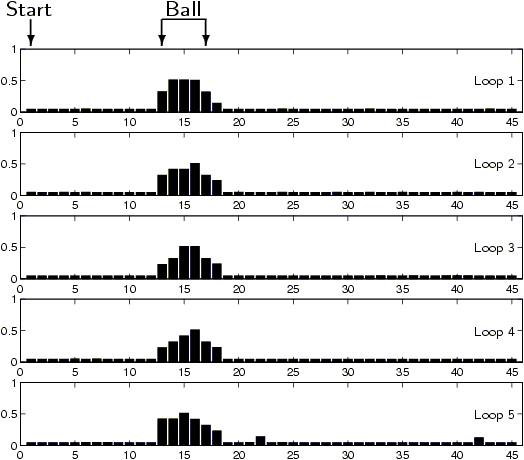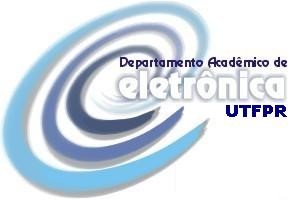Hugo Vieira Neto |
Hugo Vieira Neto |
| Home | About Me | Research | Publications | Conferences | Miscellaneous |
During my PhD at the University of Essex I used a robot called Radix, a Magellan Pro that was manufactured by iRobot Corporation. As a curiosity, I made available an example that shows how Radix saw the world when running a simple target-following application. The algorithm was very simple and used colour segmentation based on HSI parameters - it searched for blobs of a specific colour within the image frame in order to track a target object (an orange football). The distance between the centroid of the segmented blob and the centre of the image frame was used to drive the pan-tilt unit of the robot's camera. I also made available an example of the corresponding log-polar cortical map and its reconstruction. A modified version of the program, which was able to control the robot in order to physically move towards the orange football, was demonstrated during the National Science Week (UK) in 2003.
For novelty detection purposes, the robot needed to have the ability to learn visual representations in order to discriminate and highlight new, arbitrary features. Experiments were conducted to evaluate image pre-processing techniques, mechanisms of visual attention and artificial neural network architectures for the task of model acquisition through unsupervised learning (or technical details, please read the several related papers available in the publications section of this website). The experiments were conducted in two distinct phases: an exploration phase, executed in an empty robot arena, and an inspection phase, this time including a novel object (e.g. an orange foot ball) in the robot arena. The examples below illustrate how the achieved visual novelty detection system behaves.
Exploration phase (empty arena): Average degree of novelty vs time (5 consecutive loops in the arena) |
Inspection phase (orange football inside the arena): Average degree of novelty vs time (5 consecutive loops in the arena) |
|
Departamento Acadêmico de Eletrônica Universidade Tecnológica Federal do Paraná Av. Sete de Setembro 3165, Curitiba-PR, 80230-901, BRAZIL |
 |
Phone: +55 41 3310-4616 (DAELN) E-mail: hvieir [at] utfpr [dot] edu [dot] br Webpage: http://dainf.ct.utfpr.edu.br/~hvieir/ |
| Last updated: 04 Mar 2020 |